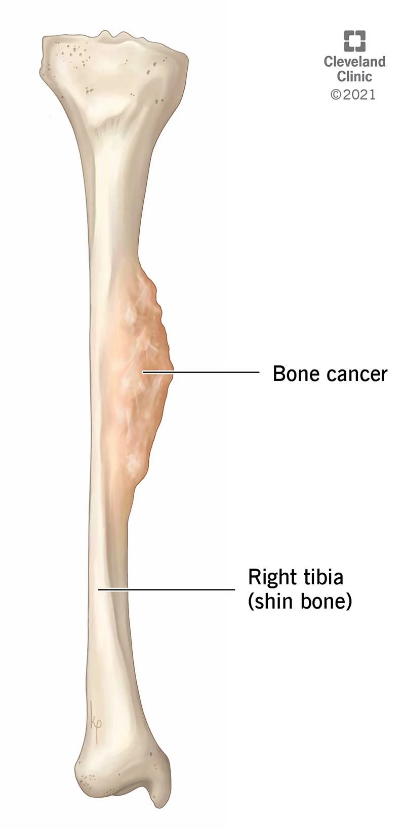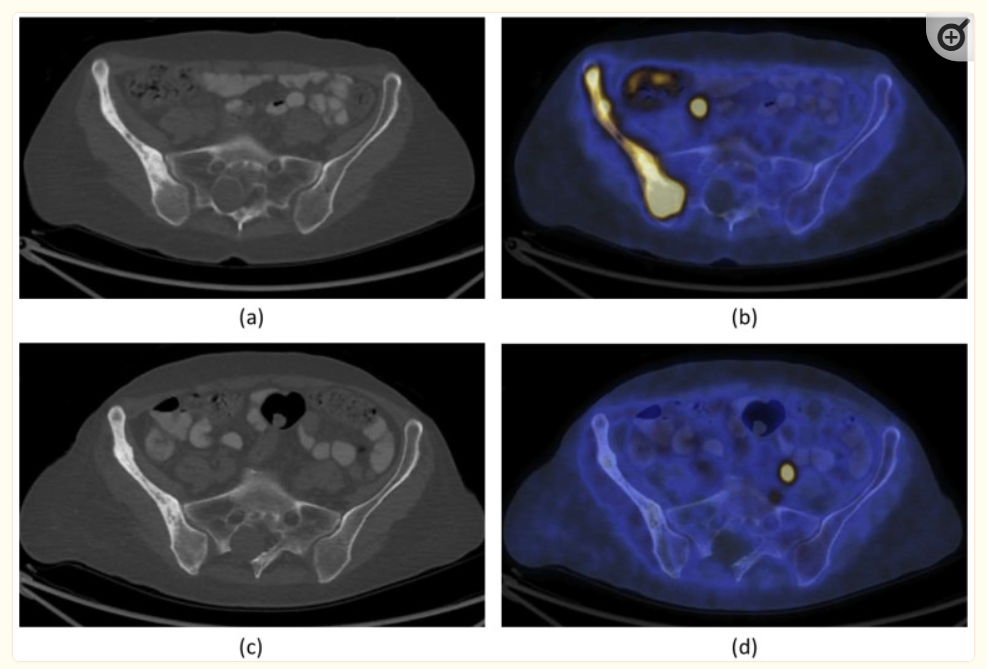About

Bone tumors develop when cells within a bone divide uncontrollably, forming a lump or mass of abnormal tissue.
Most bone tumors are benign (not cancerous). Benign tumors are usually not life-threatening and, in most cases, will not spread to other parts of the body. Depending upon the type of tumor, treatment options are wide-ranging — from simple observation to surgery to remove the tumor.
Some bone tumors are malignant (cancerous). Malignant bone tumors can metastasize — or cause cancer cells to spread throughout the body. In almost all cases, treatment for malignant tumors involves a combination of chemotherapy, radiation, and surgery.
Description
Bone tumors can affect any bone in the body and develop in any part of the bone — from the surface to the center of the bone, called the bone marrow. A growing bone tumor — even a benign tumor — destroys healthy tissue and weakens bone, making it more vulnerable to fracture.
When a bone tumor is cancerous, it is either a primary bone cancer or a secondary bone cancer.
A primary bone cancer actually
begins in bone
A secondary bone cancer begins somewhere else in the body and then metastasizes or spreads to bone. Secondary bone cancer is also called metastatic bone disease.
Types of cancer that begin elsewhere and commonly spread to bone include:
Breast
Lung
Thyroid
Renal (kidney)
Prostate
(https://orthoinfo.aaos.org/en/diseases--conditions/bone-tumor/)
Current treatment methods
Surgical Treatment
Benign Tumors
In some cases, your doctor may recommend removing the tumor (excision) or another surgical technique to reduce the risk of fracture and disability. Some tumors may come back, even repeatedly, after appropriate treatment. Rarely, certain benign tumors can spread or become cancerous (metastasize).
Malignant Tumors
Limb salvage surgery. This surgery removes the cancerous section of bone but keeps nearby muscles, tendons, nerves, and blood vessels intact where possible. The surgeon will take out the tumor and a portion of healthy tissue around it. The excised bone is replaced with a metallic implant (prosthesis), bone from elsewhere in your body, or bone from a donor.
Amputation. Amputation is surgery to remove all or part of an arm or leg. It is usually used when a tumor is large and/or nerves and blood vessels are involved. A prosthetic limb can aid function after amputation.
Recovery
The length and complexity of your recovery will depend upon the type of tumor as well as what type of procedure was performed.
When treatment is finished, your doctor may order more -Xrays and other imaging studies to confirm that the tumor is gone.
After treatment, you will continue to see your doctor for regular follow-up visits and tests every few months. Even though the tumor has disappeared, it is important to monitor your body for signs of recurrence. Tumors that come back may pose serious problems so it is important to detect them early.
(Bone Tumor - Types and Treatments - OrthoInfo - AAOS)
What type of bone tumor patients are particularly well suited for HIFU?
Patients with nonpalpable invasive bone tunmors.
How does HIFU work for bone tumours (the advantages)?
HIFU is an ideal keep-function therapy for bone tumour patients and does not cause bleeding or scarring. It does not require general anaesthesia, and hence has a reduced recovery time.

A 66-year-old woman with bone metastasis in the right ilium. Trans-axial 18F-FDG PET/CT slide at the level of the pelvis (a): CT; (b): fused PET/CT) demonstrates pathological increase in 18F-FDG uptake in a larger mixed lytic-sclerotic lesion before treatment. After MR-HIFU treatment, no 18F-FDG uptake was observed in the right ilium (d). There is, however, no change in the bony structure on CT (c). The findings are consistent with healed metastasis in the right ilium with no evidence of active residual malignancy in the site. FDG = fluorodeoxyglucose; PET = positron emission tomography; CT = computed tomography). Figures adapted and reprinted from Journal of Pain and Symptom Management, Volume 56 Issue 1, Eisenberg E, Shay L, Keidar Z, Amit A, and Militiau D, Magnetic Resonance–Guided Focused Ultrasound Surgery for Bone Metastasis: From Pain Palliation to Biological Ablation?, 158–162, 2018, with permission from Elsevier (Amsterdam, The Netherlands)